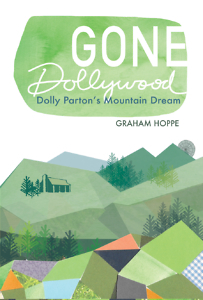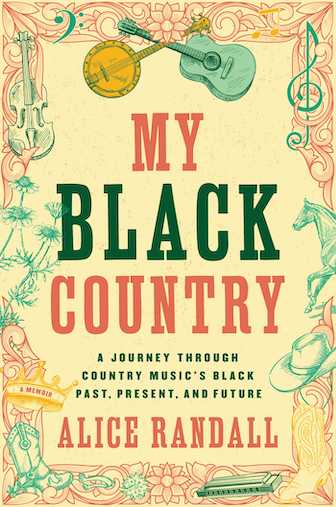Red-State Disneyland or Bastion of Equality?
Graham Hoppe examines the cultural implications of Tennessee’s beloved theme park
Outside of the phrase, “Go, Vols,” Dollywood is probably the most evocative word in Tennessee. In Gone Dollywood: Dolly Parton’s Mountain Dream, Graham Hoppe explores the cultural juggernaut that is Dollywood, the genius behind Dolly’s stardom, and the effect of Pigeon Forge’s culture on Appalachian identity and cultural preservation.

Hoppe opens by reflecting on the meaning behind a cornerstone of Dollywood: the replica of Dolly’s childhood home. At this two-room cabin, he overhears a conversation between two visitors which beautifully illustrates the power of Dolly’s story. “It was hard for them,” an elderly woman tells her son. “It was hard for us too.” After a pause, she adds, “She’s never forgotten it, never forgotten us. She’s done a lot for her people.” This shared history is perhaps the strongest proof of Parton’s authenticity as a county artist and the greatest reason for her success as an entrepreneur.
How else, in a time of great sensitivity towards labels, could a cultural icon get away with calling herself “white trash”? Because Dolly-and Dollywood by proxy-has worked to redefine what such terms mean. “Dolly Parton cares about the mountains, she cares about the culture there-and, yes, she cares about the hillbillies and the white trash too,” Hoppe writes. “That is why those terms sound different coming out of her mouth. You don’t get to throw those terms around and wrap yourself up in them unless you care. You have got to be invested.”
And Dolly has invested. When the fires in Sevier County destroyed the homes of hundreds of its residents, she pledged $1,000 a month to each family who lost its home. She has established college scholarships for Sevierville’s high-school students. Her literacy foundation, Dolly Parton’s Imagination Library, has sent out over 100,000,000 free books-beginning in Sevier County and expanding to reach children around the world.
 While Dollywood itself goes out of its way to hire native artisans and preserve cultural authenticity, it must be read, in some part, as part of the larger culture of Pigeon Forge. “If Dollywood carefully dances along the edge of oversimplification,” writes Hoppe, “the Pigeon Forge Parkway leaps into the crevasse of stereotype without a second thought. To drive down the parkway today is to be immersed in the neon smear of transient consumer culture.”
While Dollywood itself goes out of its way to hire native artisans and preserve cultural authenticity, it must be read, in some part, as part of the larger culture of Pigeon Forge. “If Dollywood carefully dances along the edge of oversimplification,” writes Hoppe, “the Pigeon Forge Parkway leaps into the crevasse of stereotype without a second thought. To drive down the parkway today is to be immersed in the neon smear of transient consumer culture.”
Many academic books about pop culture can drag during research-heavy sections. Instead, Gone Dollywood grounds history in current events. For example, the Dixie Stampede, a theatrical dinner show under Dolly’s ownership, originally had a loose Civil War theme, but the programs have been revamped to distance the venue from the war-obviously a response to the turmoil of today’s race relations.
Though political sensitivity might be harder to spot in Pigeon Forge, Hoppe does a masterful job of tracing the political trickle-down, asking hard questions about politics, consumerism, and modern Southern identity. Is Dollywood a tourist trap capitalizing on stereotypes of mountain identities? Is it a “red-state Disneyland”? How can Dollywood thrive as a “gay vacation destination, family-friendly retreat, home base for Dolly Parton fanatics, place for church camp kids to ride roller coasters, home for artisans, and place for working musicians to get a toehold on a career” all at once?
Like Dolly herself, Gone Dollywood is a discussion of a cultural phenomenon which goes far beyond its surface appearance. At its core, Hoppe is writing about identity and creativity: “Dollywood is a creative act. That makes it art. All art exerts its influence on us. I suppose that is why we are so guarded against art that seems to exist to separate us from our money. We know that art can take control of us. It can teach us, mold us, inform us, and move us.”
[To read Chapter 16’s interview with Dolly Parton, click here.]

Sarah Carter is a high-school English teacher living and working in Lebanon, Tennessee. She is currently an M.F.A. candidate at the Sewanee School of Letters.


